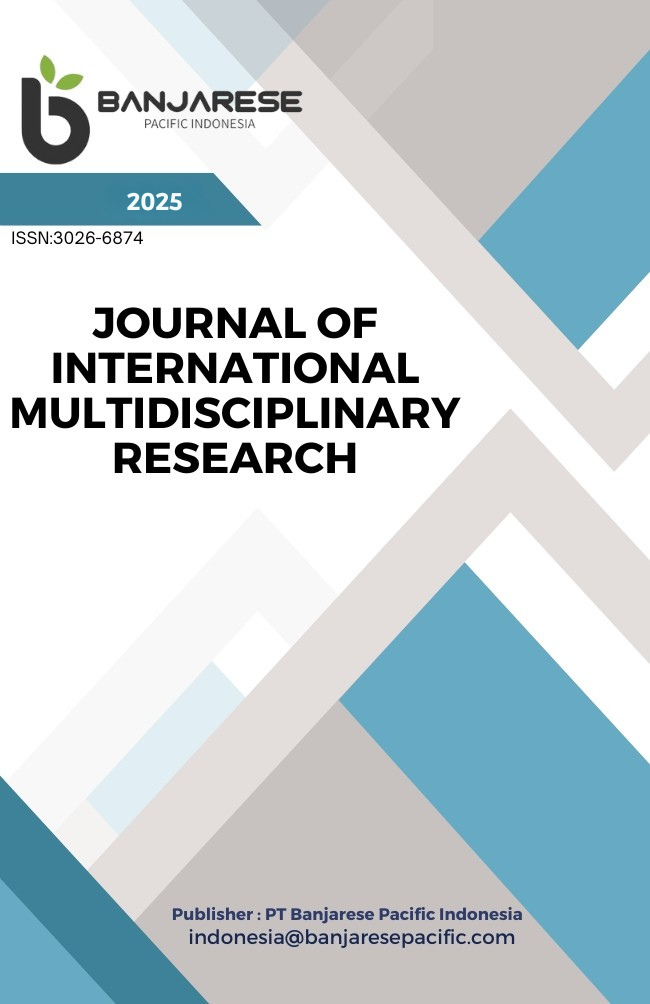Respon Pertumbuhan dan Hasil Varietas Jagung Terhadap Pemberian Pupuk Organik Di Lahan Kering Masam
DOI:
https://doi.org/10.62504/jimr1263Keywords:
han kering masam, pupuk organik, varietas jagungAbstract
Penelitian ini bertujuan mengevaluasi respons pertumbuhan dan hasil jagung terhadap pemberian pupuk organik di lahan kering masam Kabupaten Boalemo, Provinsi Gorontalo. Tujuan spesifiknya adalah: (1) menentukan dosis pupuk organik optimal, (2) mengidentifikasi varietas jagung terbaik, dan (3) menemukan kombinasi optimal antara dosis pupuk dan varietas. Penelitian dilaksanakan dengan rancangan faktorial dua faktor menggunakan Rancangan Petak Terpisah (RPT), melibatkan tiga varietas jagung (Jakarin, NK 212, Pulut Uri 1) dan tiga dosis pupuk organik (O1=0 g/tanaman; O2=200 g/tanaman; O3=300 g/tanaman). Analisis data dilakukan melalui sidik ragam (ANOVA) dan uji lanjut DMRT (α=5%). Hasil penelitian menunjukkan bahwa dosis pupuk organik O2 memberikan respons terbaik pada tinggi tanaman (201,51 cm), jumlah daun (10,07 helai), diameter batang (18,42 mm), panjang tongkol (17,89 cm), bobot 100 butir (38,13 g), dan produksi per hektar (13,68 ton/ha). Varietas NK 212 dan Jakarin unggul dalam parameter agronomi dibandingkan Pulut Uri 1, dengan NK 212 mencatatkan hasil tertinggi pada kombinasi dengan O2. Interaksi antara varietas dan dosis pupuk tidak selalu signifikan, tetapi pemilihan varietas tetap menjadi faktor kritis untuk adaptasi di lahan masam. Pupuk organik dosis O2 efektif meningkatkan pH tanah, mengurangi toksisitas Al³⁺, serta meningkatkan ketersediaan hara N, P, dan K. Rekomendasi utama adalah penggunaan varietas NK 212 bersama pupuk organik O2 sebagai strategi optimal untuk produktivitas jagung di lahan kering masam. Penelitian ini memberikan basis teknologi budidaya jagung ramah lingkungan yang dapat diterapkan di wilayah dengan kondisi serupa.
Downloads
References
Ahmed, O. H., Ali, M., Abdullah, R., Chowdhury, A. J. K., Salleh, N. T., & Musah, A. A. (2022). Co-application of triple super phosphate and chicken litter biochar improves phosphorus availability of mineral tropical acid soils to reduce water pollution. Desalination and Water Treatment, 264, 40–53. https://doi.org/10.5004/dwt.2022.28706
Dong, L., Zhang, W., Xiong, Y., Zou, J., Huang, Q., Xu, X., Ren, P., & Huang, G. (2022). Impact of short-term organic amendments incorporation on soil structure and hydrology in semiarid agricultural lands. International Soil and Water Conservation Research, 10(3), 457–469. https://doi.org/10.1016/j.iswcr.2021.10.003
Ejigu, W., G.Selassie, Y., Elias, E., & Damte, M. (2021). Integrated fertilizer application improves soil properties and maize (Zea mays L.) yield on Nitisols in Northwestern Ethiopia. Heliyon, 7(2), e06074. https://doi.org/10.1016/j.heliyon.2021.e06074
Gezahegn, A., Selassie, Y. G., Agegnehu, G., Addisu, S., Mihretie, F. A., Kohira, Y., Lewoyehu, M., & Sato, S. (2025a). Synergistic effects of aquatic weed biochar and inorganic fertilizer on soil properties, maize yield, and nitrogen use efficiency on Nitisols of Northwestern Ethiopian Highlands. Journal of Agriculture and Food Research, 21, 101939. https://doi.org/10.1016/j.jafr.2025.101939
Guidinelle, R. B., Burak, D. L., Rangel, O. J. P., Peçanha, A. L., Passos, R. R., Rocha, L. O. da, Olivares, F. L., & Mendonça, E. de S. (2024). Impact of historical soil management on the interaction of plant-growth-promoting bacteria with maize (Zea mays L.). Heliyon, 10(7), e28754. https://doi.org/10.1016/j.heliyon.2024.e28754
Nyirenda, H., & Balaka, V. (2021). Conservation agriculture-related practices contribute to maize (Zea mays L.) yield and soil improvement in Central Malawi. Heliyon, 7(3). https://doi.org/10.1016/j.heliyon.2021.e06636
Orebo, D., Shanka, D., & Hadaro, M. (2021). Maize (Zea mays L.) yield response to the effect of blended fertilizer and varieties under supplemental irrigation at Hadero Zuria Kebele, southern Ethiopia. Heliyon, 7(8). https://doi.org/10.1016/j.heliyon.2021.e07697
Schwalb, S. A., Hemkemeyer, M., Christensen, B. T., Heinze, S., Oliva, R. L., Joergensen, R. G., & Wichern, F. (2024). Disentangling the effects of mineral fertiliser N, P and K on microbial biomass, necromass and ionome in soil from the Askov long-term field experiment. Soil Biology and Biochemistry, 195. https://doi.org/10.1016/j.soilbio.2024.109449
Sittadewi, E. H., Tejakusuma, I. G., Mulyono, A., Handayani, T., Tohari, A., & Zakaria, Z. (2024). Post-landslide restoration through multistrata agroforestry-based land management in the West Bogor area of Indonesia. Trees, Forests and People, 16. https://doi.org/10.1016/j.tfp.2024.100593
van den Broek, S., Nybom, I., Hartmann, M., Doetterl, S., & Garland, G. (2024). Opportunities and challenges of using human excreta-derived fertilizers in agriculture: A review of suitability, environmental impact and societal acceptance. Science of the Total Environment, 957. https://doi.org/10.1016/j.scitotenv.2024.177306
Wakwoya, M. B., Woldeyohannis, W. H., & Yimamu, F. K. (2022). Effects of minimum tillage and liming on maize (Zea mays L.) yield components and selected properties of acid soils in Assosa Zone, West Ethiopia. Journal of Agriculture and Food Research, 8. https://doi.org/10.1016/j.jafr.2022.100301
Yimer, T., Abera, G., Beyene, S., & Rasche, F. (2024). Optimizing fertilization schemes to narrow the maize yield gap in smallholder farming systems in southern Ethiopia. Heliyon, 10(13), e33926. https://doi.org/10.1016/j.heliyon.2024.e33926
Uddin, K., Saha, B. K., Wong, V. N. L., & Patti, A. F. (2025). Organo-mineral fertilizer to sustain soil health and crop yield for reducing environmental impact: A comprehensive review. European Journal of Agronomy, 162, 127433. https://doi.org/10.1016/j.eja.2024.127433
Downloads
Published
Issue
Section
License
Copyright (c) 2025 Roslina Ridwan Karim, Sofyan Abdullah, Bachtiar Ismail (Author)

This work is licensed under a Creative Commons Attribution-ShareAlike 4.0 International License.













